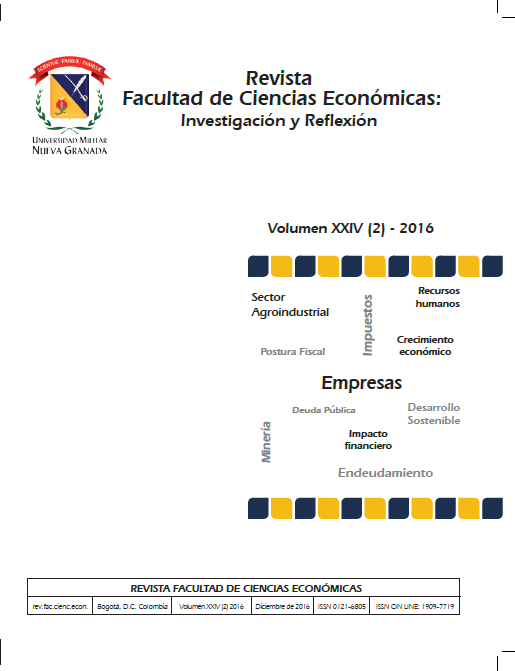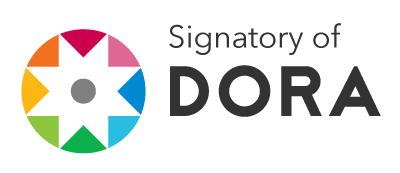A cost accumulation system for the refrigeration agribusiness sector companies
Abstract
The empirical costs formulation can provide answers to the urgencies of information on costs and serves as circumstantial support to management decisions, however, this does not mean that you have the appropriate means to determine logical and effective results on slaughterhouses and industrial refrigerators. In the meat industry, alternatives of production management should be studied daily, so it is essential to define a cost accumulation system that reflects its full operating cycle. Therefore, the purpose of this research is to present the outlines of a cost accumulation system for the refrigeration agribusinesses sector, allowing them proper costing of their products and, in turn, get more informed and accurate decision-making. The data collection techniques used were direct observation, documentary observation and not structured interviews applied to accounting and production managers from the industrial refrigeration sector from the state of Merida (Venezuela). The results show that traditional accounting records little satisfy the information requirements posed by the refrigeration agribusiness sector dynamic market. It is concluded that the per process costs accumulation system with the joint costs allocation method application based on market prices is appropriate for companies in this field of industry. The empirical costs formulation can provide answers to the urgencies of information on costs and serves as circumstantial support to management decisions, however, this does not mean that you have the appropriate means to determine logical and effective results on slaughterhouses and industrial refrigerators. In the meat industry, alternatives of production management should be studied daily, so it is essential to define a cost accumulation system that reflects its full operating cycle. Therefore, the purpose of this research is to present the outlines of a cost accumulation system for the refrigeration agribusinesses sector, allowing them proper costing of their products and, in turn, get more informed and accurate decision-making. The data collection techniques used were direct observation, documentary observation and not structured interviews applied to accounting and production managers from the industrial refrigeration sector from the state of Merida (Venezuela). The results show that traditional accounting records little satisfy the information requirements posed by the refrigeration agribusiness sector dynamic market. It is concluded that the per process costs accumulation system with the joint costs allocation method application based on market prices is appropriate for companies in this field of industry.Downloads
References
Asofrigo (2010). Informe de Gestión 2006 y 2007. [Página web en línea]. Disponible en URL: http://www.analitica.com.
Backer, M., Jacobsen, L. & Ramírez, D. (1983). Contabilidad de Costos: Un Enfoque para la Toma de Decisiones (2da. ed.). Naucalpan de Juárez, México: Mc Graw-Hill Interamericana.
Balestrini, M. (2002). Como se Elabora el Proyecto de Investigación. Caracas, Venezuela: Consultores Asociados, Servicio Editorial.
Ca-iba-o, L. & Mallo, C. (1974). El Cálculo de los Costes en la Producción Conjunta. Revista Espa-ola de Financiación y Contabilidad, III (8), 305-336.
Cats-Baril, W., Gatti, J. & Grinnell, D. (1986). Joint Product Costing in the Semiconductor Industry. Management Accounting, 67 (8), 28-31, 34-35.
Chacón, G. (2007). La Contabilidad de Costos, los Sistemas de Control de Gestión y la Rentabilidad Empresarial. Actualidad Contable FACES, 10 (15), 29-45.
Chacón, G. (2010): Práctica de la Contabilidad de Costos y la Rentabilidad de las Pymes del Municipio Libertador del Estado Mérida. Tesis de Maestría no publicada. Universidad de Los Andes, Mérida, Venezuela.
García, J. (2001). Contabilidad de Costos (2da ed.). México Distrito Federal, México: Mc. Graw Hill Interamericana.
Gatti, J. & Grinnell, D. (2000). Joint Cost Allocations: Measuring and Promoting Productivity and Quality Improvements. Journal of Cost Management, 4 (4), 13-21.
Gayle, L. (1999). Contabilidad y Administración de Costos (6ta. ed.). México Distrito Federal, México: Mc Graw-Hill Interamericana.
Gómez, B. (2005). Contabilidad de Costos (5ta ed.). Santa Fe de Bogotá, Colombia: Mc. Graw Hill Interamericana.
Hansen, D. & Mowen, M. (2007). Administración de Costos: Contabilidad y Control (5ta. ed.). México Distrito Federal, México: Cengage Learning Editores.
Hargadon, B., & Múnera, A. (2004). Contabilidad de Costos. Bogotá, Colombia: Editorial Norma.
Horngren, Ch., Datar, S. & Rajan M. (2012). Contabilidad de Costos: Un Enfoque Gerencial (14ta. ed.). Naucalpan de Juárez, México: Pearson Educación.
Lang, T. (1981). Manual del Contador de Costos. México Distrito Federal, México: Editorial Limusa.
Lavolpe, A. (2005): Los Sistemas de Costos y la Contabilidad de Gestión: Pasado, Presente y Futuro. Costos y Gestión, (5), 661-672.
López, M. (1999): "El Cambio y la Cultura Organizacional al Dise-ar un Sistema de Información de Gestión y su Reflejo en un Cuadro de Manera Integral". Gestión y Estrategia, (15), pp. 103-114.
Meigs, R. & Meigs, W. (1994). Contabilidad: La Base para Decisiones Gerenciales (11va. ed.). Bogotá, Colombia: Mc Graw-Hill Interamericana.
Morillo, M. (2002). Dise-o de Sistemas de Costeo: Fundamentos Teóricos. Actualidad Contable FACES. 5 (5), 7-22.
Neuner, J. & Deakin, E. (1982). Contabilidad de Costos: Principios y Prácticas. México Distrito Federal, México: Editorial Limusa.
Oropeza, H. (2005). Los Costos en la Empresa: Guía Técnica. México Distrito Federal, México: Editorial Trillas.
Ortega, A. (1997). Contabilidad de Costos. Instituto Mexicano de Contadores Públicos, México Distrito Federal, México: Editorial Limusa.
Overland, C. & Sandoff, A. (2014). Joint Cost Allocation and Cogeneration [Working paper en línea]. Consultado el 03 de Marzo de 2016. Disponible en URL: http://gup.ub.gu.se/records/fulltext/194779/194779.pdf
Pi-ate, P. (2010). Atrasado el Mercado Cárnico en Venezuela. Notas Agropecuarias Venezuela [Blog en línea]. Consultado el 15 de Septiembre de 2014. Disponible en URL: https://agronotas.wordpress.com/2010/05/11/carne-24/
Polimeni, R., Fabozzi, F., Adelbeg, A. & Kole, M. (1994). Contabilidad de Costos: Conceptos y Aplicaciones para la Toma de Decisiones Gerenciales (3ra. ed.). Santa Fe de Bogotá, Colombia: Mc Graw-Hill Interamericana.
Sabata, A. (2010). Propuesta Metodológica para la Valoración de la Producción en Empresas Ganaderas. Una Aplicación Práctica al Sector Ganadero Porcino. Revista Iberoamericana de Contabilidad de Gestión [Revista en línea], VIII (15). Consultado el 03 de Marzo de 2016. Disponible en URL: http://www.observatorio-iberoamericano.org/RICG/N%C2%BA_15/Anna_Sabata_Aliberch.pdf
Segovia, E. & Jerez, N. (2008): Nudos Críticos en la Cadena Cárnica Bovina. En Gonzáles, C., Madrid, M. y Soto E. (Eds.), Desarrollo Sostenible de la Ganadería Doble Propósito (pp. 805-817). Maracaibo, Venezuela: Fundación Girarz, Ediciones Astro Data.
Sierra, R. (2002, Abril 22). Columna Semanal. El mundo de las Organizaciones. Diario Frontera, p. C-2.
Sinisterra, G. (2006). Contabilidad de Costos. Bogotá, Colombia: Ediciones Ecoe.
Torres, A. (2002). Contabilidad de Costos: Análisis para la Toma de Decisiones (2da. ed.). México Distrito Federal, México: Mc Graw-Hill Interamericana.











